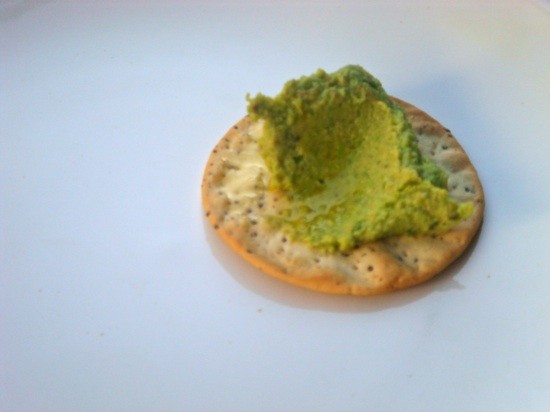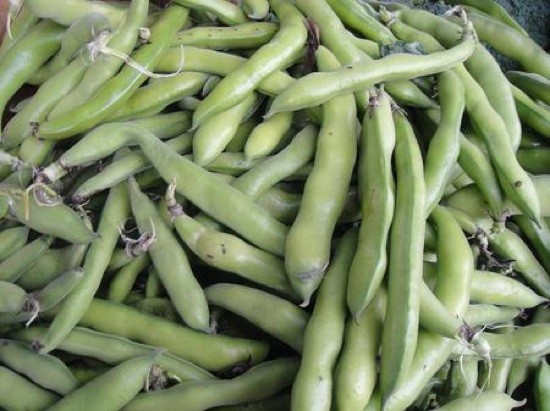Dave Lieberman heralded the arrival of fava beans at local farmers' markets back in April, and the somewhat elephantine pods are still being found in stacks as the spring and early-summer legume continues its season. Favas aren't the easiest vegetable to prepare–and not because you need to score some human flesh to eat along side them, per Silence of the Lambs. They require not just shelling, but also two rounds of blanching, the first to remove the thick skin encasing each individual bean. Regardless of the labor required to get at the bulbous and intensely green pulses, they're beloved throughout the Mediterranean–and elsewhere in the world, particularly Latin America–popping up, both fresh and dried, in pastas, falafel, purees and more.

]
The traditional recipe for fava bean puree favored in the Italian region of Puglia–otherwise known as the heel of Italy's boot–is made from dried favas, but a fresh bean version with similarly southern Italian flavors can easily be made with a few pounds worth of pods and little work beyond the admittedly tedious hulling. The blanched beans are run through a food processor with a handful of green olives, basil, garlic and parmesan, then thinned out slightly with a heavy, steady stream of good olive oil–as you would in making pesto–turning the Kelly green puree a touch more pale and evermore creamier. All it needs is a nice round of bread to be smeared on–or just a spoon, really–and its ready to be enjoyed, another wonderfully bright harbinger of spring . . . just in time for June Gloom.

Fresh Fava Bean Puree
3-4 pounds fava beans, in shells (3 cups shelled)
1/3 cup green olives, pitted if necessary
1/2 cup grated parmesan (alternatively, ricotta salata–a classic pairing with favas–or even a fresh goat cheese can be used)
1/3 cup loosely packed basil leaves
1 small clove of garlic, smashed
Zest of 1/2 a lemon, or 1/2 a preserved lemon (since I know you have a jar of them sitting on the counter)
1/2 olive oil
salt and pepper, to taste
1) Bring a large pot of water to a boil while shelling the fava beans. Prepare an ice bath, then toss the shelled beans into the boiling water and cook for 2 to 3 minutes. Remove the beans from the pot and dump them into the ice water. The blanching and shocking will loosen the tough skin on the beans, allowing for the tender pulse to easily be squeezed out. Go through the once-blanched beans, popping out the favas and discarding the skins.
2) Bring that water back to a boil and salt it heavily. Prepare add more ice to the ice bath to make it cold yet again. Blanch the shelled, de-skinned beans a second time, cooking them until their just tender. Remove and shock them in the ice bath, drain and dry off the excess water by laying them out on a clean dishtowel
3) Place the favas in the bowl of a food processor, along with all of the other ingredients except for the olive oil
4) Run the food processor to puree the favas together with the additional ingredients. Once smooth, begin to pour in the olive oil in a smooth, slow stream, allowing it to emulsify the puree.
5) Season to taste with salt and pepper, bearing in mind that the cheese, olives and the beans themselves have all contributed some saltiness to the puree.
6) Serve on bread or crackers

